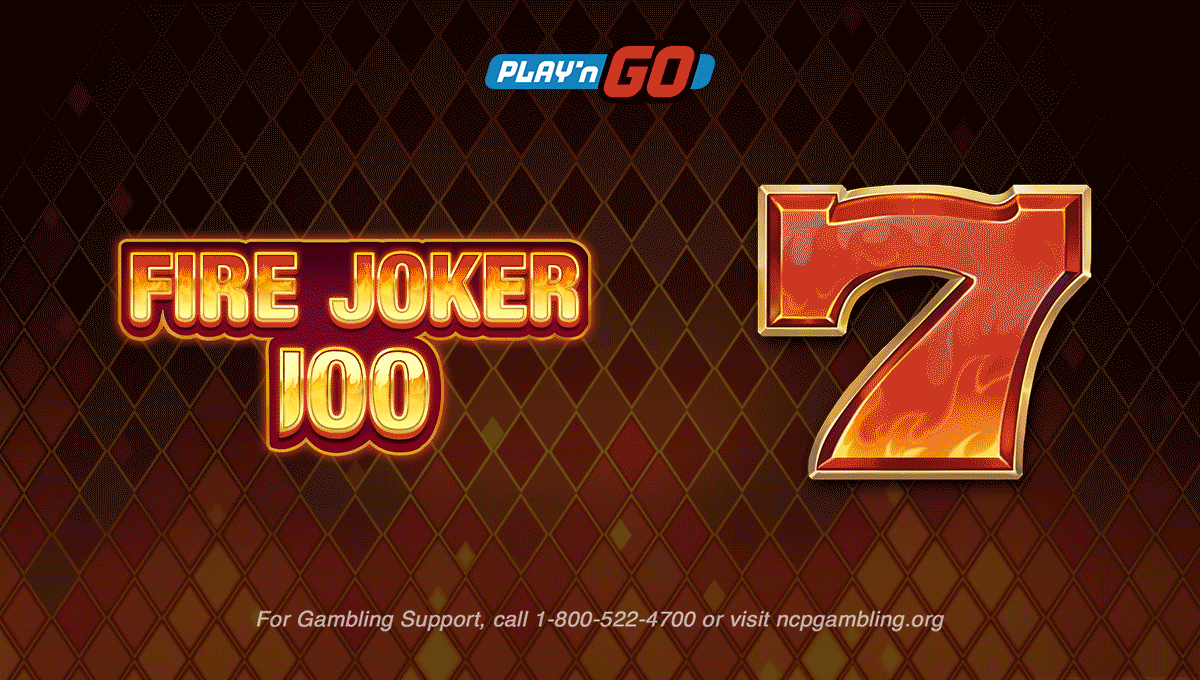Interviews
America’s got talent
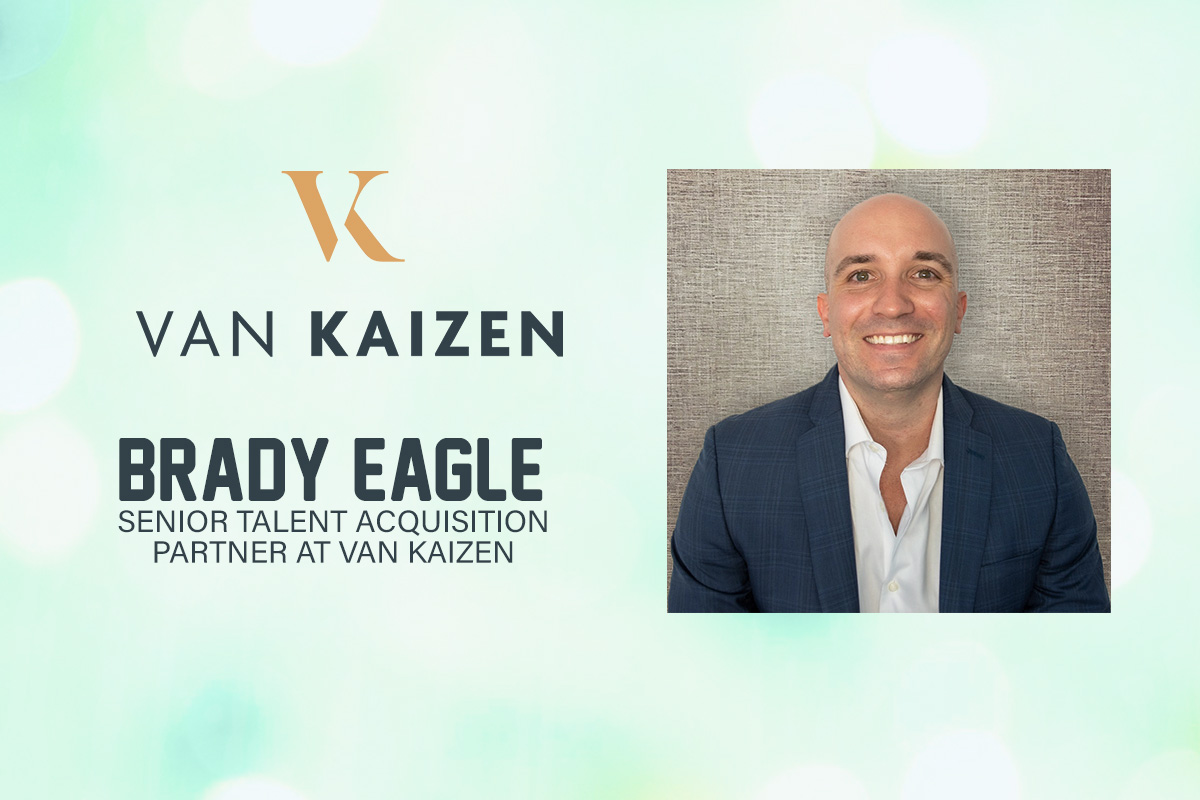
Operators and suppliers must attract the best talent in the business if they are to achieve their ambitious goals in what is a highly competitive market. We sat down with Brady Eagle from Van Kaizen to learn more.
Talent acquisition is one of the greatest challenges for organizations in North America to overcome, with the demand for experience and skill on both the operator and supplier sides high. But with the first half of the year marked by micro and macro-economic challenges, set against the maturing of the online gambling sector in the US and Canada, the pace and scale at which organizations recruit have slowed significantly.
With some of those challenges now behind us, it looks set to be business as usual for operators and suppliers when it comes to identifying and onboarding talent for the rest of the year. To learn more about current recruitment trends, including where the supply/demand balance currently sits, we spoke with Brady Eagle, Senior Talent Acquisition Partner at Van Kaizen.
How has the recruitment space in North America played out so far this year?
Recruitment in 2023 has been quite different to years past. Where there were hiring bursts from the end of 2020 to the end of 2022, the first half of 2023 saw a perfect storm of micro and macro-economic factors that hit all around the world, including North America, that slowed down the pace of talent acquisition.
These factors included the USA hitting five years post-PASPA with share/stakeholders telling companies to stop spending money and demanding they become profitable, and even layoffs hitting the iGaming sector which we hadn’t really seen before.
Off the back of a challenging six months, the second half of the year was always going to be the timetable for companies to pick back up hiring. Come the end of July the speed at which companies were looking to onboard new talent accelerated ahead of the busy fall sports seasons, along with the continued anticipation of iGaming state expansion.
So, we have seen a steadying out of hiring across operators, suppliers, and the wider iGaming ecosystem (including newer niches in North America like media and affiliates), with the main hires coming across product, digital marketing and commercial roles including sales, account management, customer success, etc.
What have been the main challenges faced and what impact has this had on talent acquisition?
The biggest challenge in 2023 was the economy’s ups and downs and the ripple effect this had on the industry. It was important to educate those in the iGaming space that the layoffs that were happening in the North American economy were mostly across the digital and B2C sectors and especially at the ecommerce power players (Meta/Facebook, Apple, Amazon, Netflix, Google) that had expanded exponentially during and post-Covid.
It was a reminder to clients that the iGaming sector isn’t affected as much by economic volatility as other industries are, and that it can even see a slight uptick during an economic downturn. So, for roles in competitive spaces like product and digital marketing, companies need to continue with those hires before the next upturn when they will find themselves back in competition with organizations from both the iGaming and other sectors. This was a tough message to get across at times.
What are the biggest hurdles organizations are up against when it comes to attracting the best talent? How can these hurdles be cleared? What does talent expect from an organization?
One of the biggest hurdles is the competitiveness within North America’s iGaming and sports betting space. With the industry being regulated for five years in the States, and even more recently in Canada in Ontario, it’s become mainstream to the point where even the most novice of bettors and/or those interested in casino want to work within the industry. iGaming is seen to provide the stability that some industries currently lack, with the ability to grow versus more mature industries that have become stagnant.
These hurdles of identifying and hiring talent can be cleared by having a very streamlined interview process, from candidate introduction and interviews, to offer, to the onboarding stage, to the candidate starting with the company. So many times, we see the interview process get off to a great start only for the final interview and offer to happen after one or two weeks of waiting during which time the candidate has potentially moved on to another opportunity. In such a competitive market, companies just can’t hand this sort of advantage to their rivals.
Where is the balance between supply and demand currently sitting? Which roles are in the highest demand?
In the iGaming and sports betting space, you’ll always see product managers, digital marketing (especially acquisition and CRM) and commercial roles (sales, business development, customer success) as being those that companies are looking to identify top talent for.
When it comes to the supply and demand of candidates, companies very much have a need for iGaming/sports betting talent, especially for Lead, Manager, Director and above levels. They need these candidates to have started/built/conceptualized and led a product roadmap end-to-end, or for them to understand campaign management on the marketing side or have a good “rolodex” or client base to be able to “hit the ground running” on the commercial side. So, the supply-and-demand, while getting bigger as a whole, is still pretty finite for senior-level roles.
Do North American businesses prefer to hire from within the US/Canada? Or is there a preference for experienced talent from Europe? What is driving this?
Unfortunately, most companies in the US are tied to immigration laws where they are only able to use US citizens or those with a Green Card (permanent residency). Even more so now, we are starting to see companies (like those in other industries in the US) wanting candidates to be located within the metro where they are headquartered or have a hub so that they can be a weekly hybrid company. With that, we are seeing an advantage handed to those companies that are still offering fully remote working.
On the Canadian side, there’s a little more flexibility, but most companies want to have the candidate based in Ontario and ideally within Toronto. But, if they are in a major metro area like Vancouver, Calgary or Montreal, there’s scope for remote and hybrid working.
How’s the recruitment space shaping up for the final quarter of the year?
Most companies have weathered the storm of the first half of the year, and things are starting to pick back up. With conference season in full swing with SBC Barcelona having just taken place and G2E in Vegas and SBC Latin America in Miami on the docket for the end of this year, you’ll see companies celebrating their successes by hiring across sales and business development, marketing, and product.
The continued (and more recent) push is for those with iGaming and especially iCasino experience as there is hope for more states to launch iGaming next year – Rhode Island is ready and raring to go – and the need for them to start to prepare for that given how much of a revenue driver it is for organizations.
Any final thoughts you’d like to share about recruitment in North America?
I think that recruiting will be back to somewhat steady and normal levels in 2024. With the steadying of inflation (as of September, at least!) and potential new jurisdictions coming down the line or launching, it should be another exciting year for both operators and suppliers to continue to carve their way to more market share on the B2C side, or to be able to get in and bring their product to operators on the B2B side. At Van Kaizen, we look forward to supporting clients on the hiring side, along with finding that new adventure for candidates.
Interviews
The White Label Dilemma: Finding the Right Balance for Your iGaming Business

It’s not just black and white label
Yoni Sidi, CEO at Wiztech, says white labels are all about striking the balance between pros and cons, but for some, it’s impossible to achieve and that’s why it’s important to consider other options.
For most operators, a white label solution seems to offer the best route to market. But is that actually the case?
I’ve been working in the industry for more than two decades now, and over that time, I’ve worked on both sides of the fence – so on the white label operator side and on the white label provider side. This gives me a deep understanding of the pros and cons of white label solutions, and this understanding ultimately led me to launch Wiztech. To answer your question more directly, white labels are always about striking the balance between the pros and cons they present – for some operators, a balance can be found, but for others, it can’t. Ultimately, it comes down to knowing what you want from your platform or technology stack, and whether a white label can meet those requirements with the budget and resources you have available to you.
So, what are the pros and cons of a white label platform?
There are plenty of upsides to white labels, and that’s why they’re used by so many operators. The main advantages are speed to market and cost effectiveness – you can literally go from first discussions to your online casino being live in a matter of weeks. The upfront fees are relatively small, and, in most cases, you pay a revenue share back to the platform provider. This can tighten margins a little, but it means you don’t have to have a large capital reserve to get going. Another benefit is that you can take on as much or as little of the operation as you like – for some, they will let the platform provider take care of the operational aspect while they focus solely on marketing and customer acquisition. Other upsides include licensing, with the white label partner securing and being responsible for the licences they hold.
Drawbacks. The biggest for me is the lack of differentiation you get with a white label. The many brands that run on the platform often look very much the same, just with different logos and branding. After a few months of operating your online casino, you’ll likely notice friction points that you’ll want to address, but the rigid nature of white-label platforms means it’s incredibly difficult to smooth out even the smallest of bumps in the road. It’s also incredibly difficult to roll out unique features and functionality as the development team is usually working through a backlog of requests – most of which are for the friction bumps that need ironing out. Factor in the frequent regulatory changes that happen, and the need for the development team to respond to them, and it’s easy to see how hard it can be to improve the experience being offered to players.
How can operators strike a balance between the pros and cons of white labels?
It comes down to understanding the capabilities of the platform provider and whether they offer customisation and localisation. If they don’t, the operator needs to determine if this is a price they’re willing to pay in exchange for the speed to market and cost effectiveness that white labels provide. Of course, some white label providers do offer support and are happy to help when it comes to developing and deploying bespoke features and functionality. But in my experience, most don’t have the capacity for this, even if they say they do. For me, the balance is found by accepting the limitations of white labels and working within the (often pretty rigid framework) they provide. There are plenty of examples of operators that have done this and have gone on to run very successful brands in highly competitive markets.
Is there an alternative to white labels?
The most obvious alternative is to develop a proprietary technology stack, but this approach comes with just as many, if not more, pitfalls. Building a platform from the ground up is incredibly expensive and tremendously risky, and this is why so few operators outside of the industry power players have been able to pull it off. And even those that do often encounter issues such as ongoing maintenance, tech debt, staffing and compliance. But there is a middle ground between white label and proprietary, and it can be found with smaller platform providers whose technologies offer the agility, flexibility and adaptability required for operators to launch highly customised, almost bespoke, online casinos and sportsbooks.
How does Wiztech fit into the platform mix, and how do you support your partners in achieving their goals in often highly competitive markets?
At Wiztech, we champion modular tech and the likes of AI and automation. By embracing these, we have been able to build powerful yet highly customisable casino and sportsbook solutions that are also fully compliant in tightly regulated markets. In our experience, being able to quickly respond to regulatory changes provides a competitive advantage to our customers. In Mexico, for example, our client Winpot has been able to deliver a unique player experience while always ensuring compliance. And this is against a backdrop where regulatory changes often come with very little notice. Our technology can adapt quickly while Winpot continues to capitalise on the growing demand for entertaining online casino products and experiences.
But just as important as our technology is our approach to our partners. This sees us undertake a comprehensive onboarding process where we spend a lot of time understanding the client’s “why” before we map out the “what” and the “how”. This has proved to be incredibly effective and ensures that our clients can get the most out of the flexibility of our platform and the high levels of customisation and personalisation it provides.
Interviews
Getting to Know Incline Gaming Marketing with Chief Commercial Officer Jo Dennis
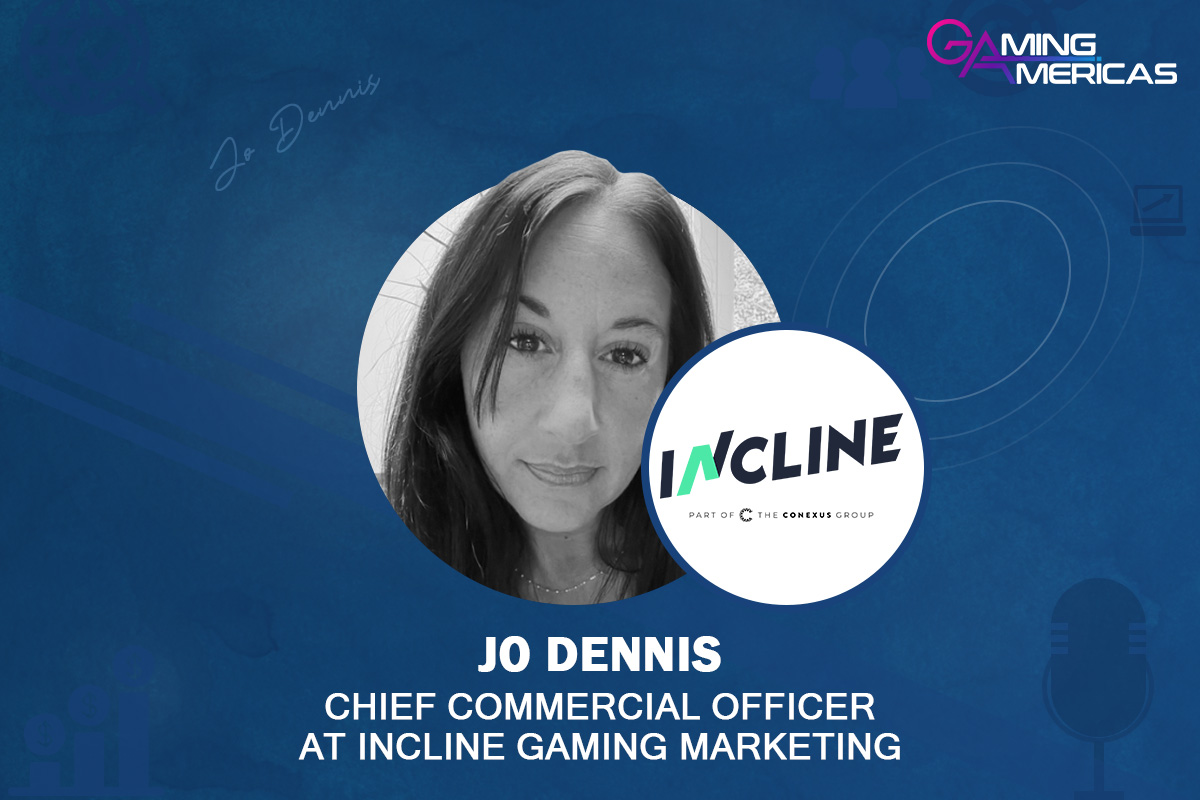
Incline Gaming Marketing is redefining how gambling brands scale and succeed worldwide. Founded by industry veteran Peter Laverick, the agency delivers end-to-end digital marketing services across user acquisition, CRM, and creative. In this interview, CCO Jo Dennis explains how Incline acts as an extension of operators’ in-house teams, helping them acquire players, boost retention, and compete globally.
Incline Gaming Marketing. Tells us what we need to know about the business.
Incline Gaming Marketing (Incline) is a full-service digital marketing partner dedicated exclusively to the regulated gambling industry. We’re not just a supplier of campaigns or assets, we run marketing operations end-to-end for our partners, functioning as an extension of their in-house team.
Our expertise spans user acquisition, CRM, and creative, delivered by specialists who’ve worked inside top operators and suppliers. With offices in San Francisco, Philadelphia, and London, we provide market-specific strategies and execution for brands in North America, Europe, Africa, Australia, and beyond.
Founded by industry veteran Peter Laverick in 2020, Incline is part of The Conexus Group alongside Pentasia (recruitment) and Partis (strategy and M&A). Our partners range from household-name operators to ambitious new entrants, all looking for a team that can step in, own the process, and deliver measurable results from day one.
Who are the main players running the business day to day?
Peter Laverick, our CEO and founder, has led marketing at some of the industry’s biggest names, including BetVictor, Aristocrat, and PlayStudios. Chief Commercial Officer Jo Dennis joined through our acquisition of Random Colour Animal in 2024 (RCA was originally founded in 2018) and brings more than 25 years in brand and marketing strategy.
Chief Marketing Officer Oren Langburt has over 15 years’ experience in real-money gaming, including leading marketing at FanDuel. VP Partner Success Haig Sakouyan is a 20+ year industry veteran, ensuring our partnerships deliver beyond marketing.
Talk us through Incline Gaming Marketing’s core service offering.
We operate in three connected disciplines that together form a complete managed marketing service:
- User Acquisition (UA): We plan, execute, and optimise campaigns across Meta, Google, TikTok, Snapchat, Apple, and programmatic networks, managing multi-million-dollar budgets. As an approved Facebook Business Partner, we’ve been rated the most effective media buyer in North America’s online gaming sector, achieving a 99.9% efficiency score.
- Customer Relationship Marketing (CRM): Our CRM specialists handle the full player lifecycle — from onboarding and first-time deposit conversion to long-term retention and reactivation. We combine data-led segmentation with targeted offers and creative to grow lifetime value while controlling bonus spend.
- Creative: We produce more than 1,000 assets per month, from brand identities and websites to broadcast-quality TV spots, slot game creatives, supplier content packs, and conference materials. All creative is performance-driven and integrated into UA and CRM campaigns for maximum impact.
When combined, these services allow us to act as a partner’s complete marketing department – – strategy, execution, and optimisation under one roof.
Which markets are you focused on? Are you pushing into any new regions?
We built our reputation in North America, where we work with leading land-based and online operators across casino, sportsbook, lottery, social gaming, and daily fantasy sports. We now deliver integrated managed services in Canada, the UK, continental Europe, Africa, and Australia, tailoring each approach to local regulations, player behaviours, and market dynamics.
For many partners, this means we handle all marketing in new markets from day one – avoiding the time and cost of building a local team – and then continue as their long-term, embedded marketing function.
Why are your services particularly valuable to operators in the current industry climate?
Player acquisition costs are rising, retention is harder than ever, and regulatory pressure is mounting. Building and managing an in-house team with the full range of skills required – from media buying to lifecycle marketing to creative production – is expensive and slow.
Incline solves that. We provide an instant, proven marketing department with deep gambling expertise, multi-channel capabilities, and global reach. Our managed services model means we don’t just advise, we execute, optimise, and deliver results. Whether launching in a new jurisdiction or scaling in a mature one, we know the levers to pull for sustainable growth.
What can we expect from Incline in the second half of the year?
We’re deepening our presence in Europe, Africa, and Canada while cementing our leadership in North America. Several major launches and brand refresh projects are underway, alongside scaled acquisition and retention campaigns for our long-term partners.
Our focus remains the same — provide operators and suppliers with a high-performing, fully managed marketing function that delivers measurable results faster, and with more certainty, than building it in-house.
Interviews
Getting to know Dreidel
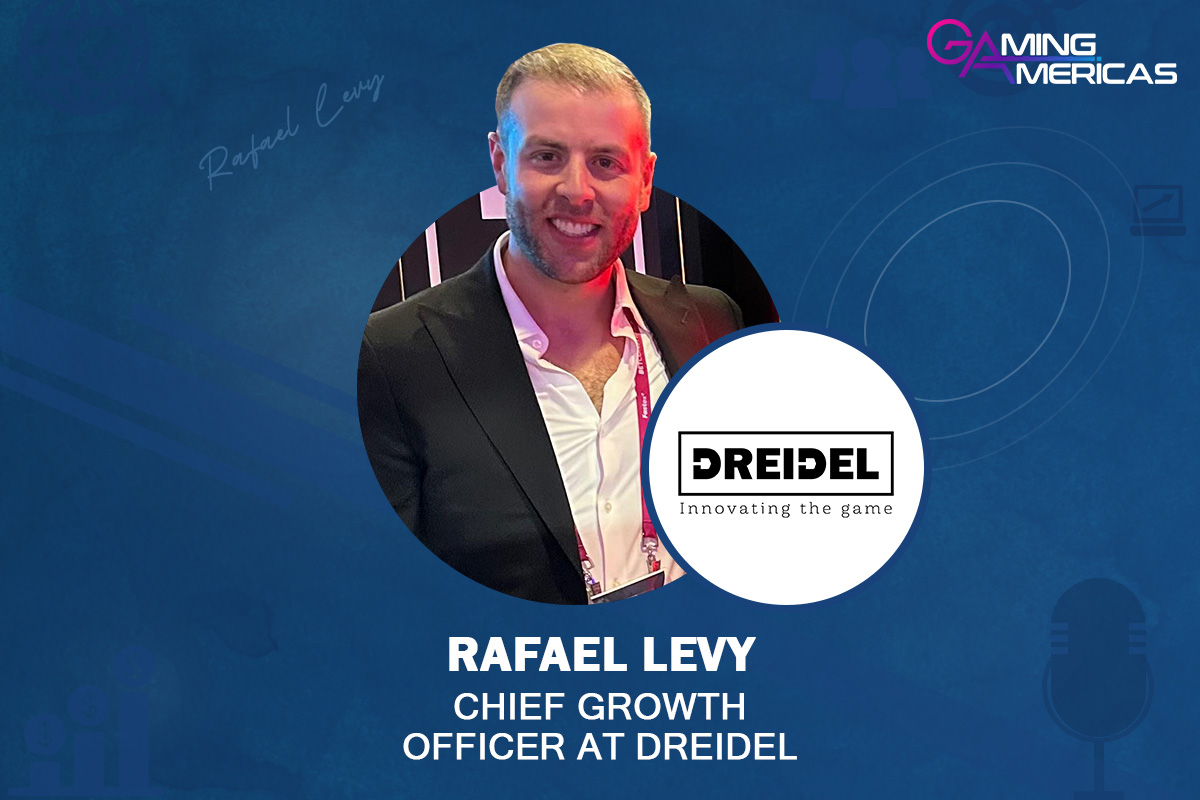
We sit down with Rafael Levy, Chief Growth Officer at Dreidel, to learn more about how the rising start slot machine manufacturer from Mexico is taking the market by storm.
For those who haven’t heard of Dreidel, who are you, and what products do you offer to the industry?
We are a proudly Mexican company that’s been designing and producing land-based slots since early 2020. Recently, we’ve expanded our offering into the online space for the first time. From day one, our mission has been to bring innovation and quality to the land-based gaming market in Mexico, and we’ve done this by making sure we have a deep understanding of player and operator needs through the hands-on experience of our team and constant iteration and improvement of our products. What sets us apart – indeed, I’d say it’s our superpower – is the highly experienced team we have built at Dreidel, with everyone having worked directly in the field. This has allowed us to learn not only from the successes we have enjoyed but also from the challenges we have faced and overcome along the way.
Can you describe your approach to slot development?
Rather than develop products in isolation, we take a meticulous and practical approach to understanding the dynamics of the market we are in, especially when it comes to what the player expects from a slot game. By doing this, we’ve been able to put innovation at the foundation of our approach to development, which in turn allows us to consistently evolve our games and cabinets so they deliver fresh, engaging and differentiated experiences that hit the mark with players. Ultimately, our products for both land-based and online are born out of real-world insight and combine quality with creativity to ensure we not only meet but exceed player expectations. Because we are a young company, we’ve been able to use and leverage the latest technologies, and this has helped us deliver a superior product and ultimately build massive momentum behind the business.
Just how important is it to read the market and understand what players and operators are looking for?
It’s very important, and that’s why it’s a fundamental pillar at Dreidel. We have developed a process that allows us to read the market with precision and agility, and then easily feed that insight into our development cycle. We know that we operate in a highly dynamic environment where player preferences can shift quickly, driven by trends, global influences and evolving technologies. This is why we invest so heavily in continuous market research and pay close attention to player and operator feedback, as this enables us to act fast, adapt effectively and launch innovative products that stand out and gain traction from day one.
You mentioned your team as being critical to the early success you have achieved. Who are the key people behind the business?
Dreidel was formed as a joint initiative by a group of entrepreneurs with extensive operational experience in the gaming industry. This includes Isaac Shemaria and Moisés Shemaria, who came up with the initial idea for the business. Since our launch in 2020, we have grown with a structure that balances an ambitious strategic vision with strong on-the-ground execution. Today, the company is led by José Shemaria and Rafael Levy, and has a highly skilled multidisciplinary team driving key areas of the business.
The direction of the project is led by a collaborative leadership group that ensures every decision is aligned with our long-term goals. This synergy allows us to maintain a strong commercial focus, efficient operations, and sound financial planning, all aimed at meeting the evolving needs of the market. It’s worth highlighting our technology and innovation team, which plays a vital role in developing unique gaming experiences, turning ideas into functional products that resonate with both operators and players. This is complemented by the daily work of our developers, technicians, operators and commercial staff, who bring deep industry knowledge to ensure our products reach the market with both impact and quality.
We firmly believe that our true value lies in the strength of our collective talent. Every area and every person play a key role in turning ideas into reality. This integration of strategy, creativity, execution, and consumer insight is what has shaped our growth and continues to drive our success in such a competitive industry.
You’ve quickly established Dreidel as a leading slot machine manufacturer in Mexico. How did you do this, and what sets your product apart?
The market-leading position we have achieved is the result of a long, challenging yet rewarding journey. It’s been a step-by-step process, marked by both setbacks and incredible achievements, all of which have shaped us into the company that we are today. What sets us apart from other suppliers? I’d say it’s our ability to deeply understand and analyse what players want and enjoy. We don’t create generic products, we listen to the end user, study their behaviour, preferences, and playing habits, and design games that resonate with them on a personal level.
We focus on meeting the unique demands of the gaming sector, tailoring our offerings for each market we target. Mexico is our primary market, but we are making moves into other LatAm markets and North America, too. Our goal is to deliver games that are not only innovative in terms of technology and design but also captivating for the player, grabbing their attention from the very first spin to the last.
Today, we offer Class III products that are ranked among the top performers in the Mexican market. That leading position is the result of a clear vision, a player-focused approach and a passionate team committed to creating experiences that truly stand out.
What makes the land-based slot market so difficult to crack?
The land-based slot machine market is one of the most complex and demanding areas within the gaming industry, mainly due to the high barriers to entry, both technological and regulatory. It’s not enough to have a good idea; you need a product that is technically solid, commercially viable and fully compliant with strict industry standards.
One of our biggest challenges was developing the right product, one that would truly succeed in the market. This required significant investment in research, development, certifications and continuous testing. We also faced the challenge of competing against well-established brands, which pushed us to stand out not just through innovation, but through product quality and a deep understanding of the player.
We overcame these challenges by being patient, strategic and consistent. We had to earn the trust of operators and players one step at a time, proving that our products meet the highest standards while also delivering unique experiences that resonate with end users. It’s been a journey of perseverance, but one with highly rewarding results.
What is your top-performing game, and what made it so popular?
Our top-performing game is Imperial Ascension, a Class III title that stands out for its innovation and its ability to truly engage players. It’s more than just a slot game—it’s an immersive experience that captures attention through its functionality, visual appeal and the excitement it creates.
What has made Imperial Ascension such a success is its unique touch: it offers high rewards and a strong element of mystery that keeps players engaged throughout their session. The game continuously surprises players with multiple progressive jackpots embedded within the gameplay, which not only increases anticipation but also significantly boosts the potential for big wins. This combination of innovation, excitement and rewarding mechanics has made it one of our standout titles.
You also have a portfolio of online slots. What are your plans for the online segment, and what opportunities have you identified?
The online segment represents a completely different universe for Dreidel, with its own dynamics, audience profiles and player behaviours. That’s why we’ve developed a dedicated approach for this channel, with a specialised team that understands the nuances of the digital player experience.
Our online strategy is not about replicating the land-based model but rather adapting to new consumption habits by leveraging the advantages of technology and the accessibility of online platforms. We’ve identified significant growth opportunities in this segment, particularly driven by the increasing demand for digital entertainment, flexible formats and the ability to reach a much broader audience.
We are currently in a phase of deep market analysis and building a solid, tailored offering. Our goal is to deliver innovative, responsible and engaging experiences for online users. The online segment is a key path for our future expansion, both within Mexico and internationally.
You mention international markets. What are your plans to take Dreidel beyond Mexico?
This is the perfect time for international expansion and particularly into the United States because it’s the largest and most dynamic market in the gaming industry. It offers tremendous growth opportunities, a highly diverse base of end users, and presents many exciting challenges that we are fully prepared to take on.
The variety in player preferences within the US market pushes us to continue innovating and refining our approach. Our focus is on adapting to that diversity by delivering customised products that offer unique and engaging experiences.
The United States is one of our main strategic priorities, as we see the potential for exponential growth in that region. We’re confident that this is the natural next step for Dreidel and that we have the strength, creativity and vision to compete successfully on an international scale. Of course, we are also looking at other markets within Latin America and to replicate the success we have enjoyed in Mexico in the jurisdictions we chose to enter.
-
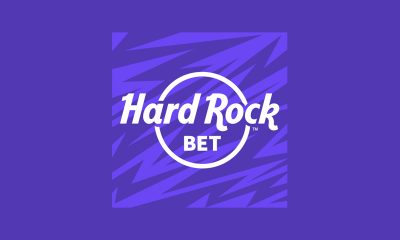
 Latest News7 days ago
Latest News7 days agoGenius Sports Expands its Long-term Partnership with Hard Rock Bet Sportsbook
-

 Canada7 days ago
Canada7 days agoSave the Date: BCLC’s New Horizons in Safer Gambling Conference Returns November 2026
-
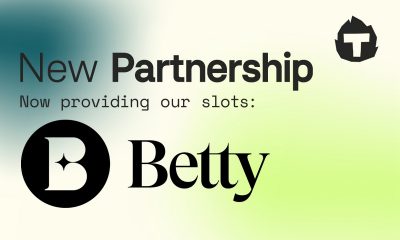
 Canada7 days ago
Canada7 days agoThunderkick commits to growth in Ontario with Betty partnership
-

 Latest News7 days ago
Latest News7 days agoAviatrix partners with TQJ and joins the Bet do Milhão portfolio
-
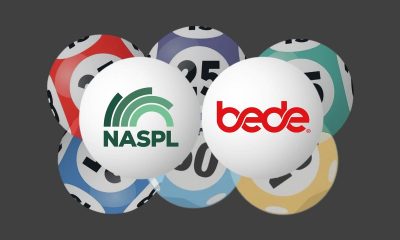
 Latest News7 days ago
Latest News7 days agoBede Gaming awarded NASPL Associate Membership
-

 Latest News6 days ago
Latest News6 days agoInspired Extends Brazil Presence with EstrelaBet Partnership
-
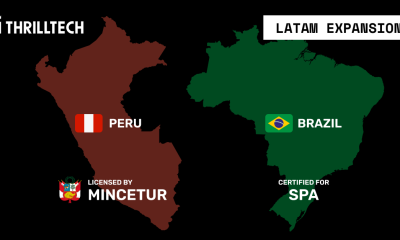
 Compliance Updates6 days ago
Compliance Updates6 days agoThrillTech secures regulatory approvals to launch jackpots in Latam
-

 Compliance Updates6 days ago
Compliance Updates6 days agoMGCB Renews Licenses for Detroit’s Three Commercial Casinos, Highlighting Continued Community and Economic Impact


